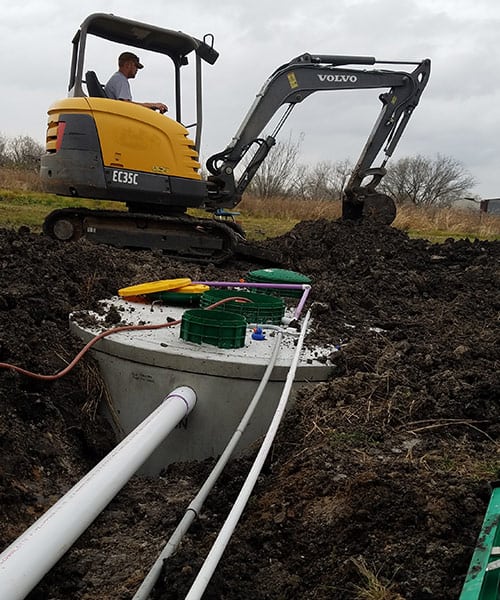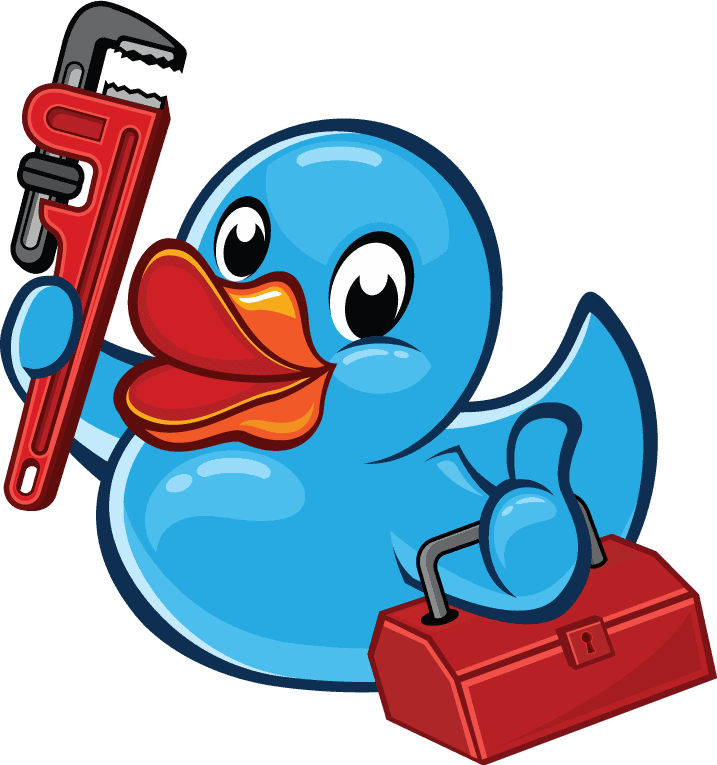SEPTIC MAINTENANCE IN TYLER, TX
Wherever you live in East Texas, Rub-A-Dub Plumbing is ready for your plumbing challenges! We deliver professional septic maintenance plans, services, and solutions. Our customers trust our capabilities. We’re insured, trained, and fully licensed. Plus, when we’re done explaining the problem, you’ll totally understand our services and how we can help!

Boost Septic System Life & Avoid Costly Problems With SMART MAINTENANCE
Properly maintaining your septic tank can maximize its lifespan and prevent vexing issues. Make sure everything flows and goes by following common-sense guidelines. The first big rule: don’t put anything you wouldn’t eat down the drain or mix it in with your toilet waste. What goes into the tank affects what goes on inside it and comes out in the drain field. Being an informed septic tank user can help you be one of our best customers – the one we see only when you need us. Let Rub-A-Dub be your smart septic system, maintenance partner.
When you hire Rub-A-Dub’s Squeaky Clean Plumbers you'll get:
- A wise and cost-efficient plan to keep your tank and drain field in tip-top shape.
- Quick and sensible solutions to any problem.
- Experts who know rural septic systems inside out.
- A truck that’s a Warehouse On Wheels.
- Upfront Pricing that leaves no surprises on your bill.
- Wastewater smoothly flowing out of your home and a little blue duck to remember us by.
Follow These Regular Guidelines to Keep the Flow Going
Limiting what and how much goes down the drain can help maintain a balanced breakdown working in your tank, a more efficient drain field wastewater distribution, and avoid clogs. Here’s what you can do to help:
Restrict What Goes In: From kitchen sinks, only easily biodegradable tiny food bits that have been washed off dining and cooking utensils. Use sink traps and dispose of any larger food parts in the garbage. In toilets, only flush human waste and septic-safe toilet paper.
Limit Water Usage: Install low-flow toilets and showerheads plus aerators on faucets. Get water efficient appliances for dishwashing and laundry.
Spread Out Washing Activities: Don’t wash large multiple loads of laundry or allow everyone to shower at one time of day. Space out washing activities to avoid large water flows that can cause messy backups, overflows and breakdowns.
What to Avoid: Food and cooking substances like grease, fats, cooking oils, sauces and coffee grounds can cause clogs and tank issues. No paper towels, disposable diapers, or sanitary napkins/tampons in toilets. Bleach and antibacterial soap can kill the working bacteria in the septic tank. Toxic cleaners, lubricants, solvents, lubricants, waxes and paints don’t go down the drain.
Use Basic Soaps: that have few extra ingredients and are natural and biodegradable.
Long-Term Best Practices Can Save You Money & Trouble
If you do what we advise above and below, it will reduce the possibility of septic system failures. If you smell, see, or sense any issues, contact us for prompt service to avoid more serious problems. In the meantime…
Check your tank at least annually to make sure it maintains steady levels of wastewater, and the upper scum and lower sludge layers.
Pump out and renew tank about every three years (or as advised for tank size and usage).
Regularly check any moving parts like pumps or valves if your system has them.
Protect the area above the tank, drain field, and pipe paths from heavy vehicles rolling over them. Avoid any weight or activity above them that might damage them. Don’t allow any trees or bushes to take root.
Keep track of your system’s age and condition, so you’re ready to repair and replace as the need arises.
So What’s Going On Down There?
Let’s start with how a septic tank works. Unlike a municipal sewer system that flows into a central drainage system that the city maintains, your septic tank is typically buried on your property where wastewater from your home flows. Upon entering your septic tank, wastewater is sectioned into three possible levels. Firstly, solid waste drops to the bottom section and bacteria turn the solid matter into sludge. Next, the majority of the middle section is comprised of water. Finally, fats and oils rise to the top section to form scum. The sludge then moves the water through pipes into the drainfield. At this point, all of the waste is distributed into the soil.
Depending on the size of the tank and the number of people in your home, your septic tank should be pumped every one to three years, and if done regularly, this septic tan will likk serviceely save on future tank repairs.
CLICK HERE TO BOOK AN APPOINTMENT
OR Fill Out the Form Below!
At Rub-A-Dub Plumbing, we’ve got our DUCKS in a ROW.
THE SQUEAKY CLEAN
PLUMBING EXPERIENCE
SCHEDULE SERVICE:
Before a Rub-A-Dub plumber comes into YOUR home…the shoe covers go on. And when we’re done, we leave your home looking better than we found it!
Our Upfront Pricing means once we figure out what’s wrong, we’ll write up an estimate. You sign off on the price before any work starts. And when we’re finished, the price is the same!
More like a Warehouse On Wheels, each Rub-A-Dub truck is fully stocked, organized, and ready for anything! That means no extra trips while we’re on the job for you!
If your last plumber smelled like a goat, you’ll appreciate the Squeaky Clean difference of Rub-A-Dub plumbers!
Plain language, no double-talk, no bait and switch! Parts are warrantied, All work is guaranteed – in writing!

